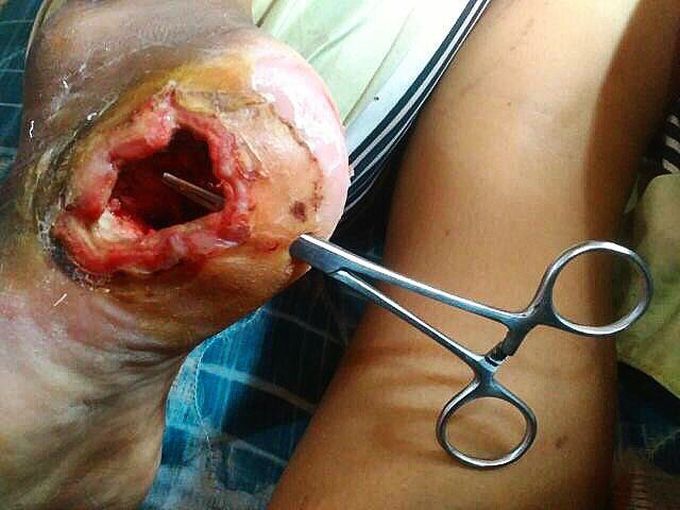


Hole in the foot
This patient has a diabetic foot ulcer, which can eventually lead to nontraumatic lower limb amputation! Diabetic neuropathy is the most common underlying cause for foot ulcer, usually develop around the margins of the foot. The neuropathy decreases pain sensation and pressure perception, it causes muscle imbalance leading to foot deformities, and impairs the microcirculation and integrity of the skin. The high pressure threshold and loss of monofilament sensation are the cause of increased risk of foot ulceration. These patients may also have other sensory deficits that include decreased vibratory sensation, decreased pinprick pain or temperature sensation. These patients don’t feel pain, so the most common cause of ulceration is repetitive mechanical forces of gait, which lead to callus, a preulcerative lesion in the neuropathic foot. If allowed to become too thick, the callus will press on the soft tissues underneath and cause ulceration. If the callus is not removed, inflammatory autolysis and haematomas develop under the callus. This leads to tissue necrosis, resulting in a small cavity filled with serous fluid giving the appearance of a blister under the callus. Removal of the callus reveals an ulcer.

